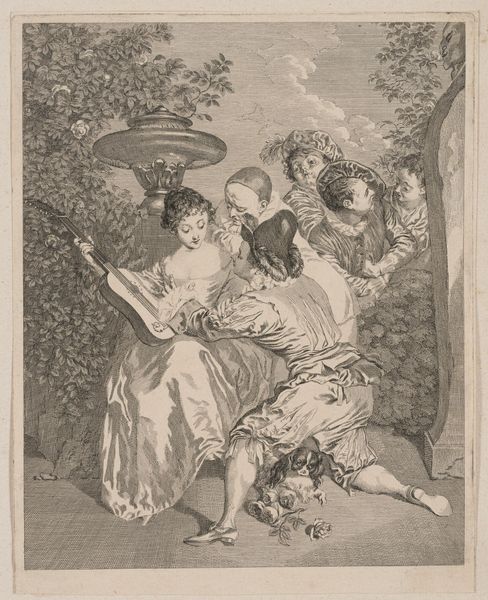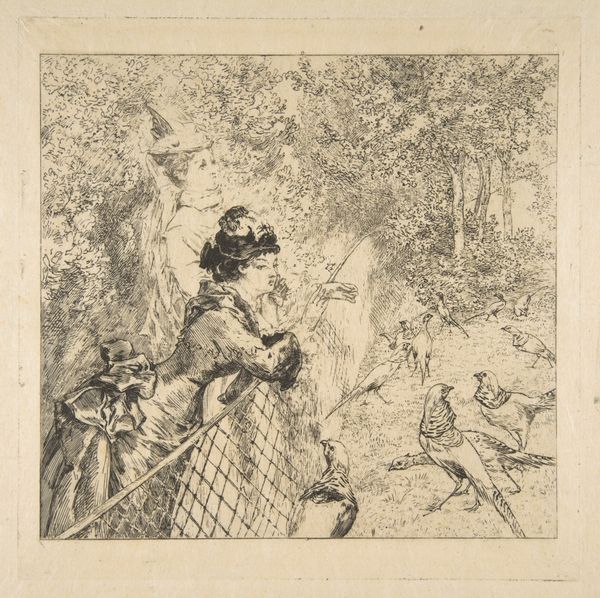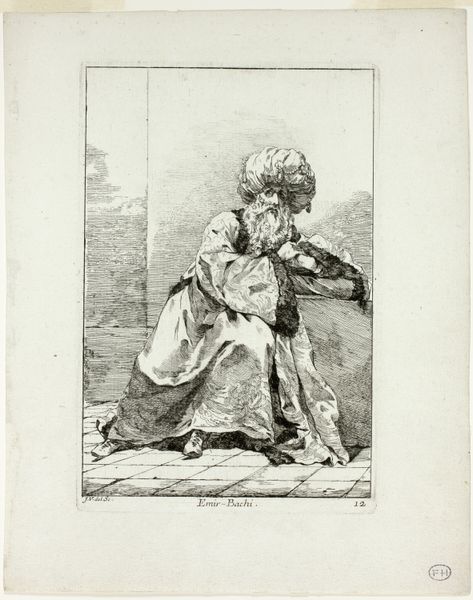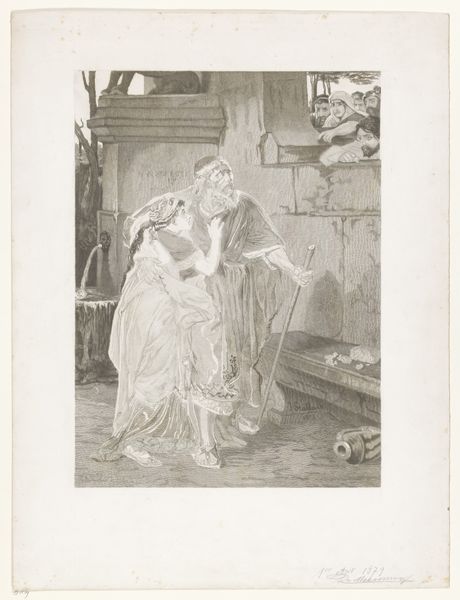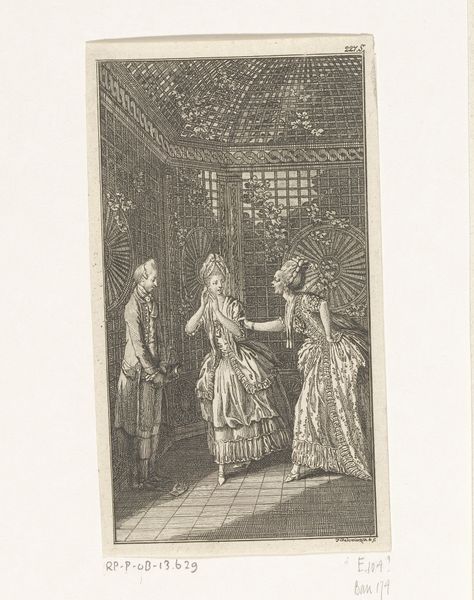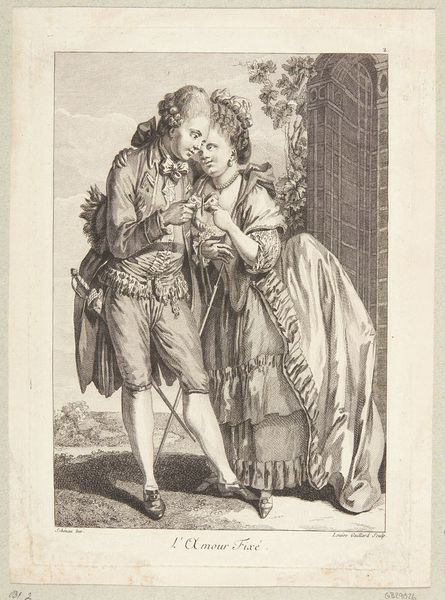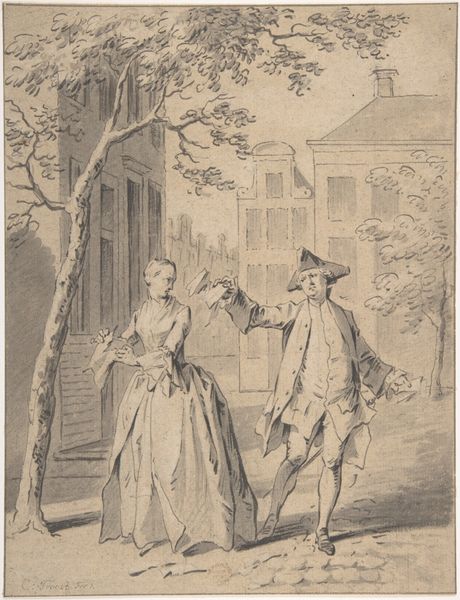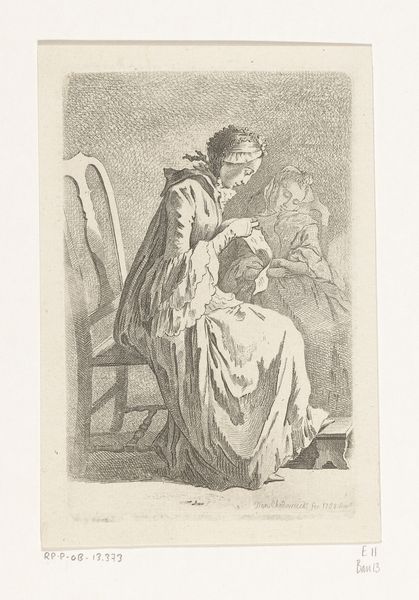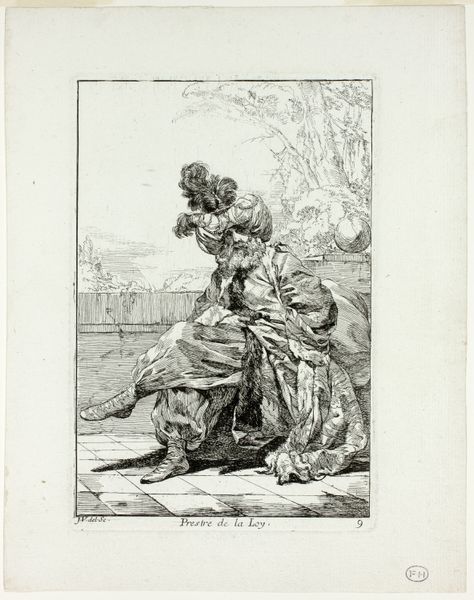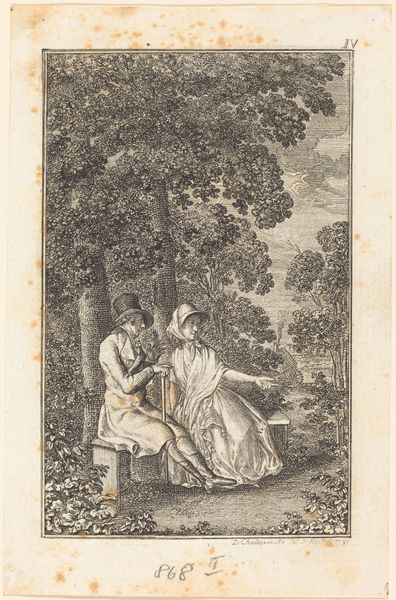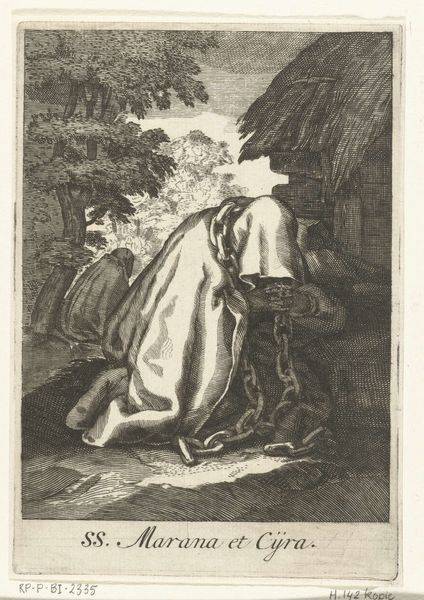
Dimensions: Plate: 13 9/16 × 9 13/16 in. (34.4 × 25 cm) Sheet: 16 13/16 × 11 1/4 in. (42.7 × 28.6 cm)
Copyright: Public Domain
Editor: Here we have Félix Bracquemond's "La Broderie à l'aiguille," created between 1850 and 1860. It appears to be a print or drawing. The detail is astonishing! There's such intimacy captured in this quiet scene. What do you see in this piece? Curator: I am drawn to the sophisticated orchestration of lines. Notice how the varying densities and directions create volume and texture, from the lush foliage framing the couple to the woman's ornate dress. It’s all about the semiotics of the line. The very hatching, cross-hatching; stippling—all are working together to deliver representational forms. Editor: Semiotics of the line, interesting! So it's not just about what's depicted but how? Curator: Precisely. The artist's marks aren’t merely descriptive, they create a visual language that invites decoding, allowing the scene's mood to resonate through texture and tone alone. Observe also, if you will, the artist's control of light and shadow. Bracquemond leverages tone to underscore focal areas. How might this interplay inform our understanding? Editor: The shading on her dress contrasts against the foliage to enhance the female subject’s role. This adds depth, giving importance to both her activity and the male figure overseeing her, even from afar! So how these different signs interact changes the way we read it... I'm learning so much, thank you. Curator: My pleasure. Considering how Bracquemond manipulated such forms, and understanding why the Romantic era valued intimate expressions, allows us a layered experience. I shall take this careful reading of forms into the rest of my day!
Comments
No comments
Be the first to comment and join the conversation on the ultimate creative platform.
